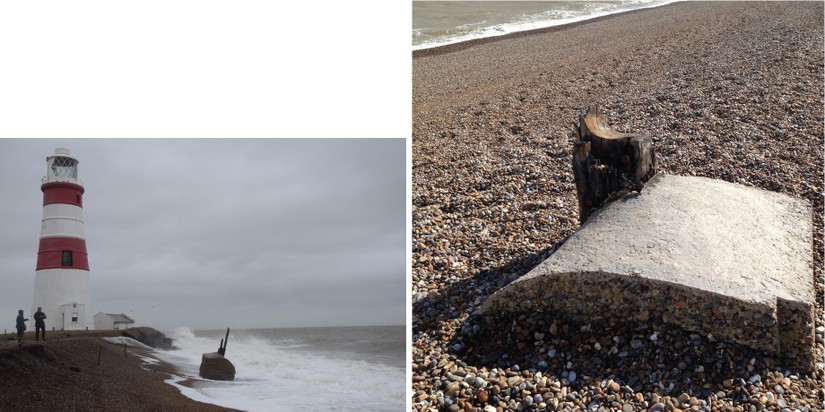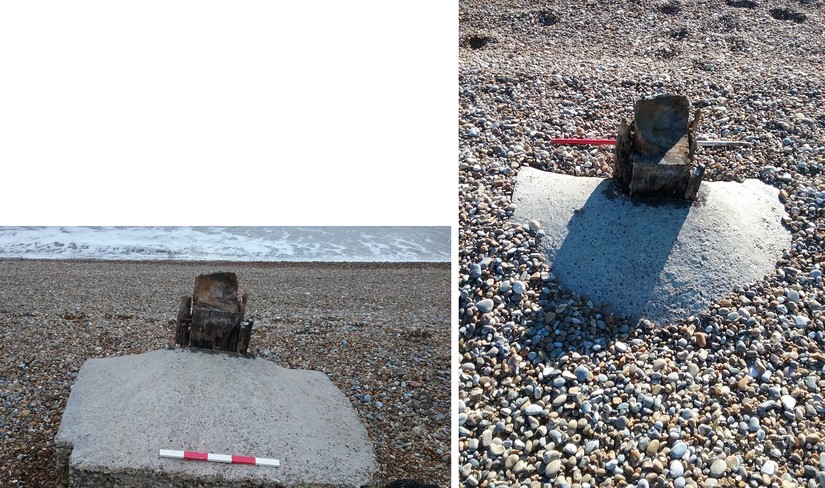Return to Orford Ness - a volunteer's view
29/03/2018 | Valerie
A former Ministry of Defence property, Orford Ness in Suffolk was used for secret weapons research and testing throughout the 20th century. It became a National Trust National Nature Reserve in 1993. I first visited the Ness thanks to a CITiZAN training event in July 2016 and was immediately struck by its beautiful light and the feeling of remoteness, though it is only a short 5-minute boat-ride from the mainland.
On the first day, following an initial classroom training session, volunteers and archaeologists walk down “The Street”, along the marshes, amongst WWI barracks and storage sheds, across the Bailey Bridge and Stoney Ditch, and are met by an alien landscape of shingles as far as the eye can see. This is punctuated all over by sometimes strange-looking concrete structures such as the distinctive “Pagodas” and in the distance, the red and white shape of the Orfordness Lighthouse.
We work in teams to measure, plan and photograph all the at-risk features on the beach, using the CITiZAN mobile app to record changes in their conditions since the last visit. On the spit, the structures are fully exposed to the forces of wind and sea so the changes can be quick and dramatic, cycling through covering and uncovering features.


Fast-forward to 2018, my third visit to the Ness, and we’re systematically surveying every structure along The Street, some only remnant base slabs of buildings that were demolished and are now being reclaimed by nature. We fight against the cold, the rain and the brambles to locate and photograph everything we can find. I record a strange looking WWI concrete structure with metal fittings which everyone, archaeologists included, ponder over – a little mystery for later examination…
Despite the weather not cooperating this time, it was a very enjoyable weekend working with inspirational people, both volunteers and professional archaeologists (thank you Lara and Steph for all your guidance and support). If you are thinking of volunteering, jump in! The rewards far outweigh the work you put in and who knows where it might lead. Me? I’m off to start a BA in Archaeology in October.








